Sometimes an article gets stuck in the pipeline, and this one about Blagny got really stuck, as my ambition to compare and analyse slowly but surely evaporated under Burgundy’s summer sun.
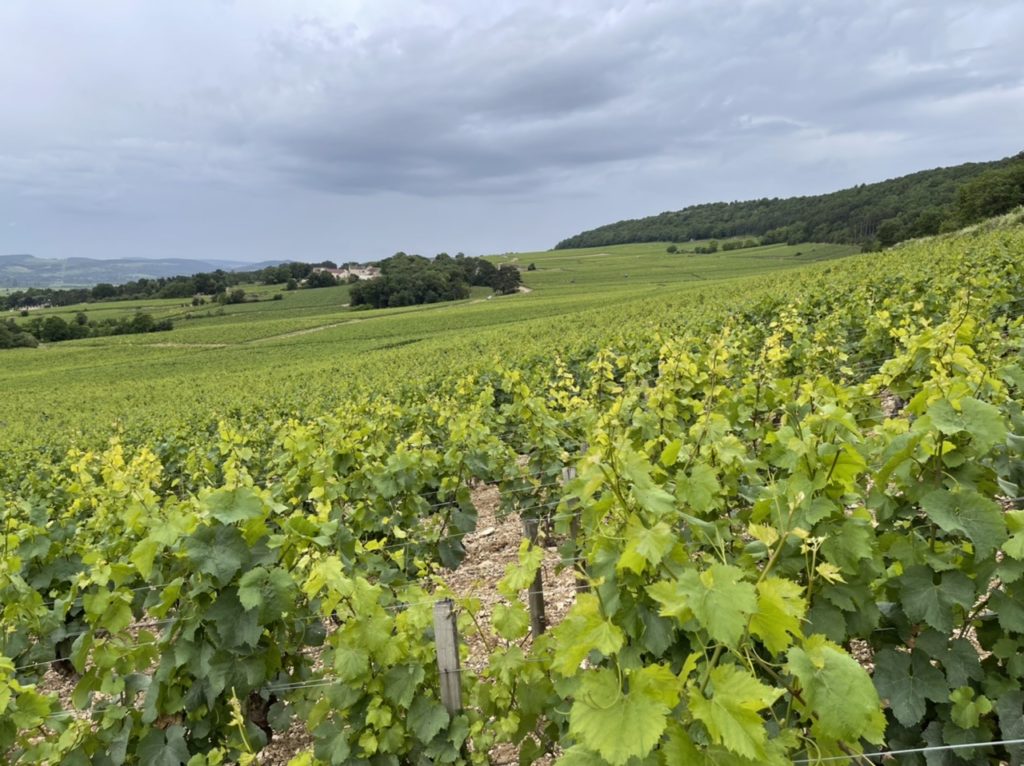
I aimed to draw attention to Blagny, with the publicity hopefully leading consumers to focus on these delightful wines. And I wanted to do it by writing something intelligent.
Instead, I have had to narrow my ambition, and simply express my delight with these wines, celebrate them, and get them out in the open.
What started my Blagny interest
When I began the Winehog quest for Burgundy knowledge more than a decade ago, I stumbled across the vineyard Blagny-Blanc/Hameau de Blagny, which was highly rated for white wines when Lavalle1 wrote his book in 1855, and again later when Danguy & Aubertin2 and Rodier3 wrote theirs.
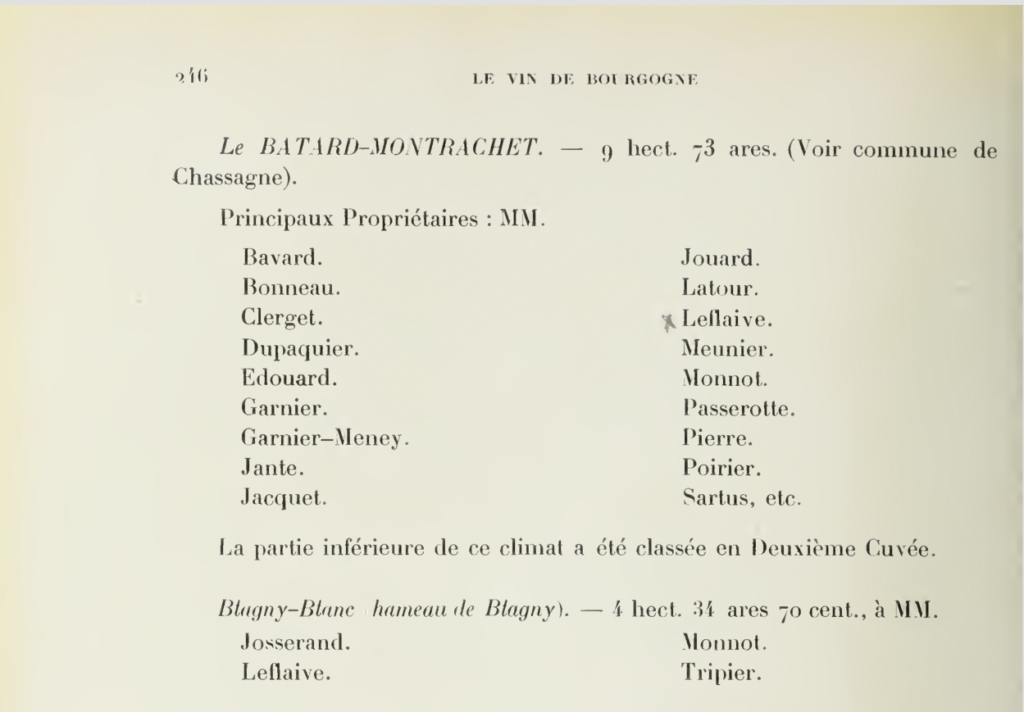
Blagny is, however, both a slightly overlooked and a partly misunderstood part of Burgundy. I have for years struggled to understand the whites from Blagny, and often felt confused. Red Blagnys are easier to handle and enjoy, but do I really understand them?
Blagny in essence
Nestled between the vineyards of Puligny-Montrachet and those of Meursault, the hamlet of Blagny enjoys one of the finest views of the Côte de Beaune. It grows red wines which carry the appellation BLAGNY or BLAGNY PREMIER CRU, with or without the name of the specific climat, but its white wines belong to the PULIGNY-MONTRACHET or MEURSAULT appellations. These vineyards were being exploited as early as the 12th century by Cistercian monks from Maizières known as the “Montrachet fathers.” The official grant of AOC status dates from 1937. – BIVB website
As stated above, the AOC is from 1937, and it is quite a paradox to see the AOC status of its whites, as at that time, many prominent vineyards in Puligny and Meursault were producing red wine.
Burgundy likes to appear very old and historic, and of course it is. But know that some of the greatest white vineyards in the world were only loosely defined until a legal ruling in 1921 (see more on the definition of Montrachet here).
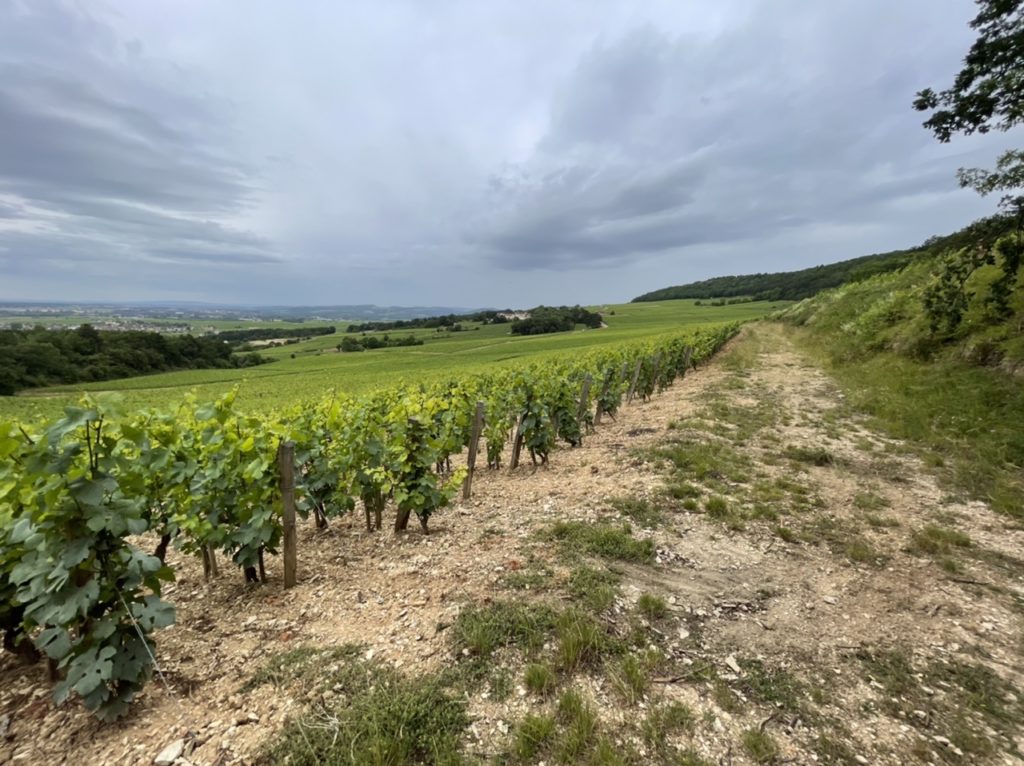
The Blagny map
Blagny is located above Meursault and Puligny-Montrachet. The appellation runs from Les Chaumes and Perrieres in Meursault, and ends in Saint-Aubin, in the Murgers Dents de Chien.
The terroir is quite different from those of Meursault and Puligny itself. It is special, and seemingly more related to the stony soil of Saint Aubin.
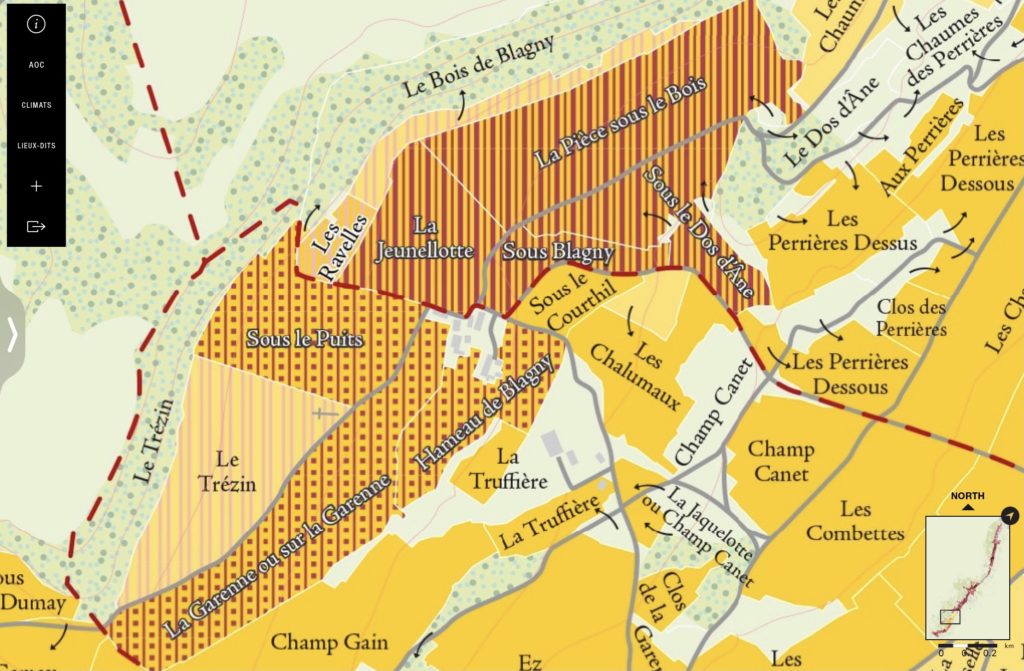
Currently, its vignerons are working on a deeper examination of the soil and understanding of the terroir; this will be exciting when completed.
Old classifications and fame
Blagny was much more acclaimed in the old days of Lavalle 1, Danguy and Aubertin2, and Rodier3. That was, however, also a time when vineyards like Puligny’s Pucelles and Caillerets were producing red wine. So clearly, preferences and/or knowledge were quite different 100+ years ago.
The 1er cru Hameau de Blagny had a strong reputation back in the day, and was rated on a par with Batard-Montrachet by Rodier in 1920.
The older classifications are not very clear about distributing the Blagny terroirs between Puligny and Meursault. As they are not really applicable now, let’s keep things simple and look at Blagny from a ‘Hog’s perspective.
Blagny – the reds
The Blagny reds are grown in the upper Meursault part of Blagny; more precisely, in the upper half of La Pièce Sous le Bois.
At altitudes of 340-400 metres, this slope lies on marl overlain by limestone scree. Lower down are clay-limestone soils. There are observable differences between some of the 1ers crus vineyards: Hameau de Blagny, for example, has richer, deeper, pebbly soil, while La Garenne is rockier and more south-facing. The soil here is the limestone-based stony pebbles that more resemble that found in the upper parts of Saint Aubin (En Remilly). It is a particular soil gathered in the Blagny valley between the forest and the rocks separating Meursault from the Blagny vineyards.
The terroir is mineral driven, yet finely grained (to my palate), producing a cool, complex wine. The reds are extremely precise, but they are wines with a lovely mineral, stony expression. Furthermore, they have some gorgeous, complex notes of woods and pine forest, with more floral elements of pine spicing the reds in a charming way.
Red Blagny is a treat, and can equal many red Côte de Beaune 1ers crus, resembling as it does top-end red Chassagne-Montrachet, where I sometimes also find these pine-forest notes.
They are wines with considerable elegance and potential, although one rarely sees them fully mature. Red Blagny is a wine for medium-density dishes – poulard de Bresse with truffle, for example, which will be so complemented as to almost start flying again on the wings of the wine. That said, the reds still have the grace that Burgundy should to accompany even lighter food.
There are two top producers of red Blagny: Domaine Benjamin Leroux and Domaine Matrot. Although different, they each convey the essence of red Blagny and all its hedonistic qualities.
Benjamin Leroux Blagny La Pièce Sous le Bois 2020
I have a soft spot for red Blagnys – and Benjamin makes a tremendous Blagny Pièce Sous le Bois, rivalling even the delightful Matrot version. The Leroux example is a real treat, with both mineral and floral sides. A delightful and lively glass.
(Drink from 2029) – Fine+ – (91-93p) – ![]()
Domaine Matrot Blagny 1er Cru La Pièce Sous le Bois 2020
The Matrot Pièce Sous le Bois is one of my favourite red Blagnys. Matrot has two hectares of this vineyard, and half of it is red. In fact, the vineyard as a whole is dominated by different parts of the Matrot family. This is floral and vivid, with a delightfully airy note – a vin d’emotion.
(Drink from 2028) – Fine+ – (91-92p) – Tasted 28/04/2022 – ![]()
Blagny – the whites
White Blagny is split into two parts, and while this does complicate things, in reality it also reflects the differences in the wines’ mineral characteristics.
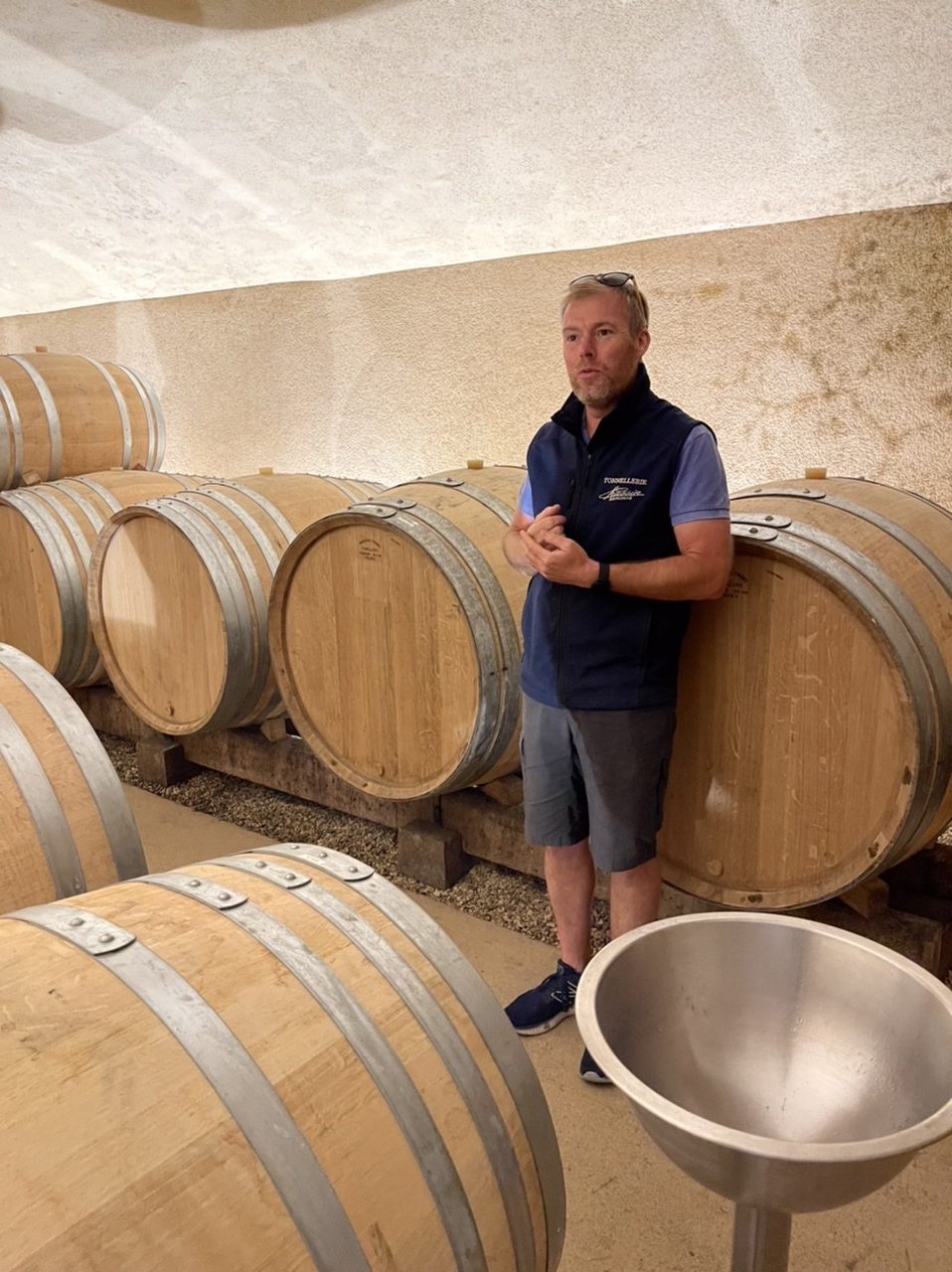
You need to login as a Premium subscriber to read the rest of this article. If you are not a Premium Subscriber, use the subscribe function and sign-up.

 - A true vin d’émotion – a Burgundy of passion
- A true vin d’émotion – a Burgundy of passion - A truly hedonistic wine – lively and enjoyable
- A truly hedonistic wine – lively and enjoyable - A vivacious wine for pure indulgance
- A vivacious wine for pure indulgance - A potential vin d´émotion - frais et léger
- A potential vin d´émotion - frais et léger